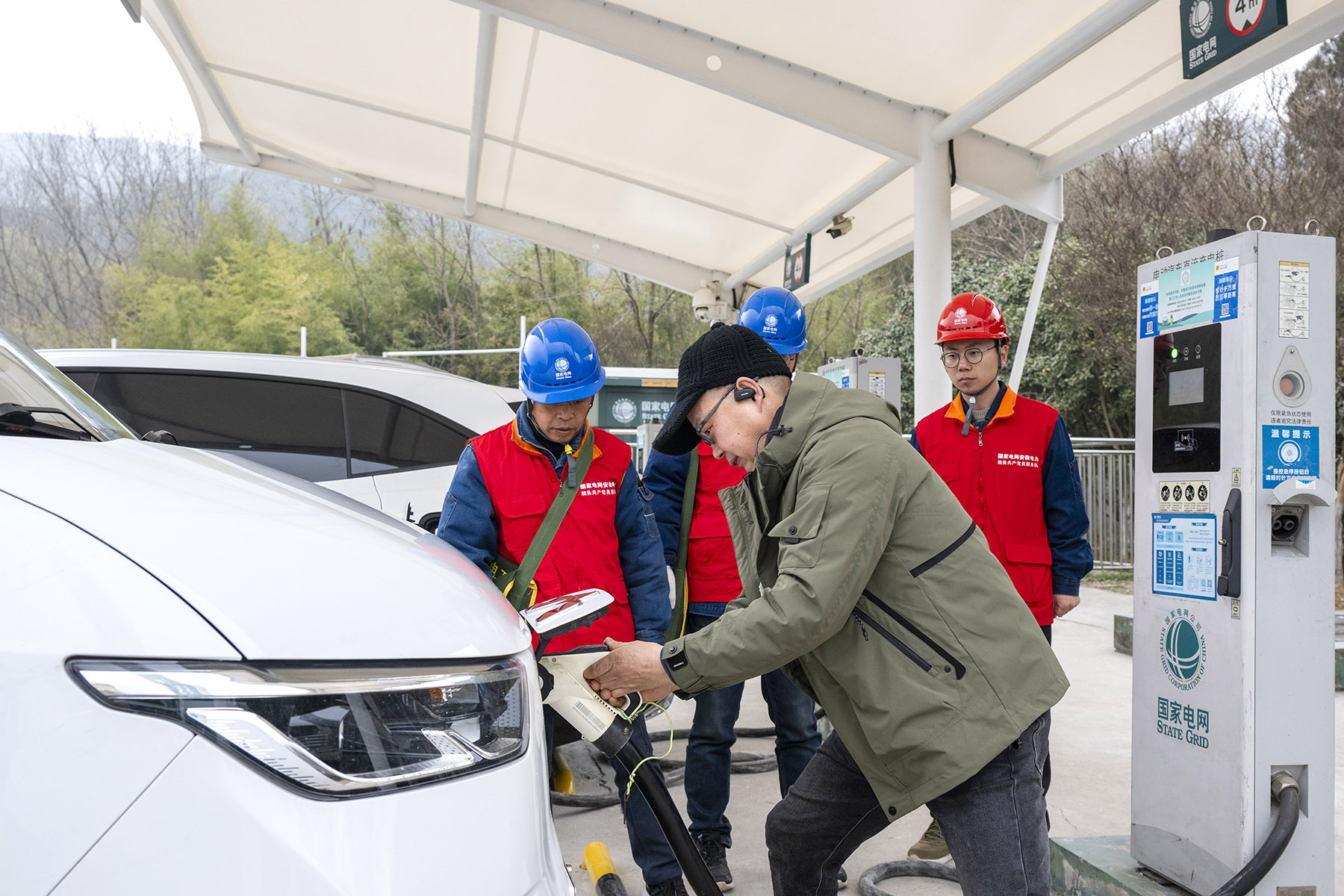
As China's new energy vehicle sector continues to grow rapidly, NEV charging volume on China's highways saw a significant increase during the Spring Festival holiday, surging nearly 30 percent compared to the same period last year, according to data from the State Grid Corp of China.
Data from the SGCC Smart Service Platform for the Internet of EVs show that during the holiday, the platform facilitated 180 million kilowatt-hours of charging, with an average daily charge of 22.58 million kilowatt-hours, marking a 25.26 percent year-on-year rise.
Of this total, highway charging accounted for 57.27 million kilowatt-hours, with an average daily charge of 7.16 million kilowatt-hours, up 29.48 percent from last year. The sixth day of the Lunar New Year saw a record high of 8.9 million kilowatt-hours of highway charging, it said.
READ MORE: Chinese NEVs shine at auto shows abroad
Industry analysts said China's NEV market has been expanding rapidly in recent years, driven by strong government support, incentives for NEV purchases and increasing consumer awareness of environmental issues.
The Chinese government has been heavily investing in expanding the national charging network, particularly along highways in recent years, said Lin Boqiang, head of the China Institute for Studies in Energy Policy at Xiamen University.
Enhanced accessibility and reliability of charging stations reduce range anxiety, encouraging more NEV owners to use their vehicles for long-distance travel during holidays, he said.
According to the National Energy Administration, by the end of 2024, a total of 35,000 charging piles had been installed in 98 percent of highway service areas across the country.
As NEVs become more mainstream, more families will be choosing them for holiday travel. This shift reflects growing confidence in NEV performance, battery range and charging network availability, especially compared to previous years when gasoline vehicles dominated long-distance travel, said Lin.
NEA spokesman Zhang Xing said earlier that the administration will continue to expand the coverage of charging facilities this year in urban and rural regions, on highways and in residential communities.
Cities across the country also established intelligent battery swapping stations and charging robots to alleviate parking and charging congestion during the holiday.
State Grid Shanghai Changxing Power Supply Co put intelligent mobile charging robots into use at the Changxing Island Service Area during the holiday, an important transportation hub from Shanghai to northern Jiangsu province. The robots, with a capacity of 100 kilowatt-hours that can charge NEVs to 80 percent in as fast as half an hour, can supplement electricity for new energy vehicles waiting in line to ensure smooth travel when the charging spaces are full.
ALSO READ: Green industry chain driving steel sector
State Grid Tianjin Electric Power Co also deployed 20 emergency charging facilities and added 28 charging spaces at major highway service areas during the holiday, further easing the pressure on fixed charging infrastructure, said Gao Shuai, deputy director of the construction and operation department at State Grid Electric Vehicle Service Tianjin Co Ltd.
Tianjin completed special inspections and real-vehicle tests on 337 key charging stations and 445 community charging stations across the city before the holiday. Additionally, video surveillance systems at 100 key sites, including those in scenic areas and along highways, were also upgraded and modified.
The charging volume on Tianjin's highway sections reached 578,200 kWh during the holiday, 36.93 percent higher compared to the same period last year, it said.
According to State Grid Corp of China, the top three provinces for highway NEV charging during the holiday were Jiangsu, Zhejiang and Anhui provinces.
Jiangsu led with 8.12 million kilowatt-hours, a 35 percent increase from the previous year. Zhejiang followed closely with 7.92 million kilowatt-hours, up 44 percent year-on-year, while Anhui saw 6.99 million kilowatt-hours, reflecting a 33 percent rise from last year, it said.


